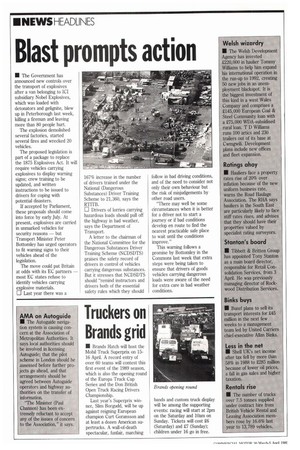Blast prompts action
Page 8

If you've noticed an error in this article please click here to report it so we can fix it.
• The Government has announced new controls over the transport of explosives after a van belonging to ICI subsidiary Nobel Explosives, which was loaded with detonators and gelignite, blew up in Peterborough last week, killing a fireman and leaving more than 80 people hurt.
The explosion demolished several factories, started several fires and wrecked 20 vehicles.
The proposed legislation is part of a package to replace the 1875 Explosives Act. It will require vehicles carrying explosives to display warning signs; crew training to be updated, and written instructions to be issued to drivers for coping with potential disasters.
If accepted by Parliament, these proposals should come into force by early July. At present, explosives are carried in unmarked vehicles for security reasons — but Transport Minister Peter Bottomley has urged operators to fit warning signs to their vehicles ahead of the legislation.
The move could put Britain at odds with its EC partners — most EC states refuse to identify vehicles carrying explosive materials.
LJ Last year there was a
167% increase in the number of drivers trained under the National (Dangerous Substances) Driver Training Scheme to 21,360, says the RTITB.
0 Drivers of lorries carrying hazardous loads should pull off the highway in bad weather, says the Department of Transport.
A letter to the chairman of the National Committee for the Dangerous Substances Driver Training Scheme (NCDSDTS) praises the safety record of drivers in control of vehicles carrying dangerous substances. But it stresses that NCDSDTS should "remind instructors and drivers both of the essential safety rules which they should follow in bad driving conditions, and of the need to consider not only their own behaviour but the risk of misjudgements by other road users.
'There may well be some circumstances when it is better for a driver not to start a journey or if bad conditions develop en route to find the nearest practicable safe place to wait until the conditions improve."
This warning follows a promise by Bottomley in the Commons last week that extra steps were being taken to ensure that drivers of goods vehicles carrying dangerous loads were aware of the need for extra care in bad weather conditions.








































































































































